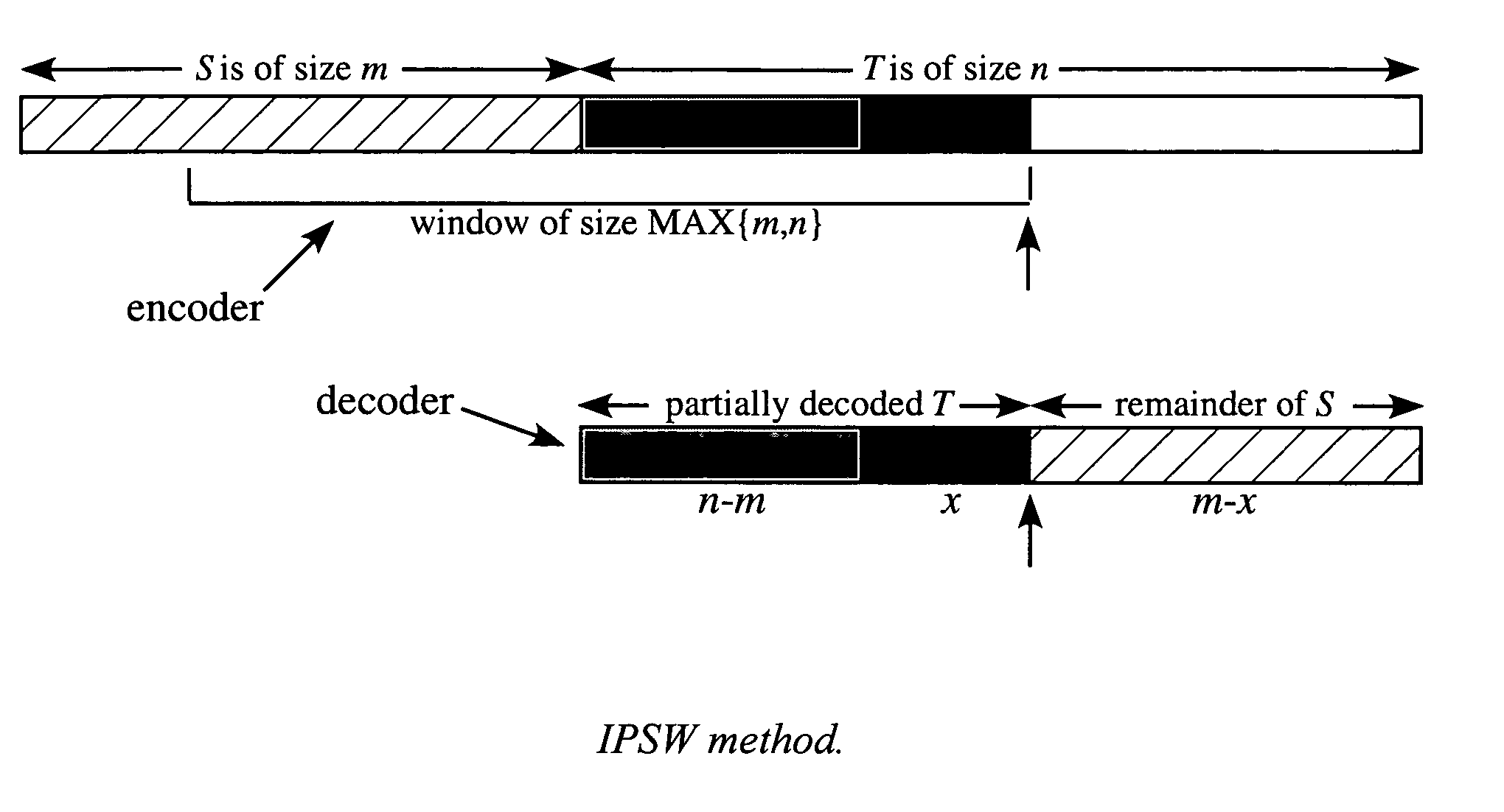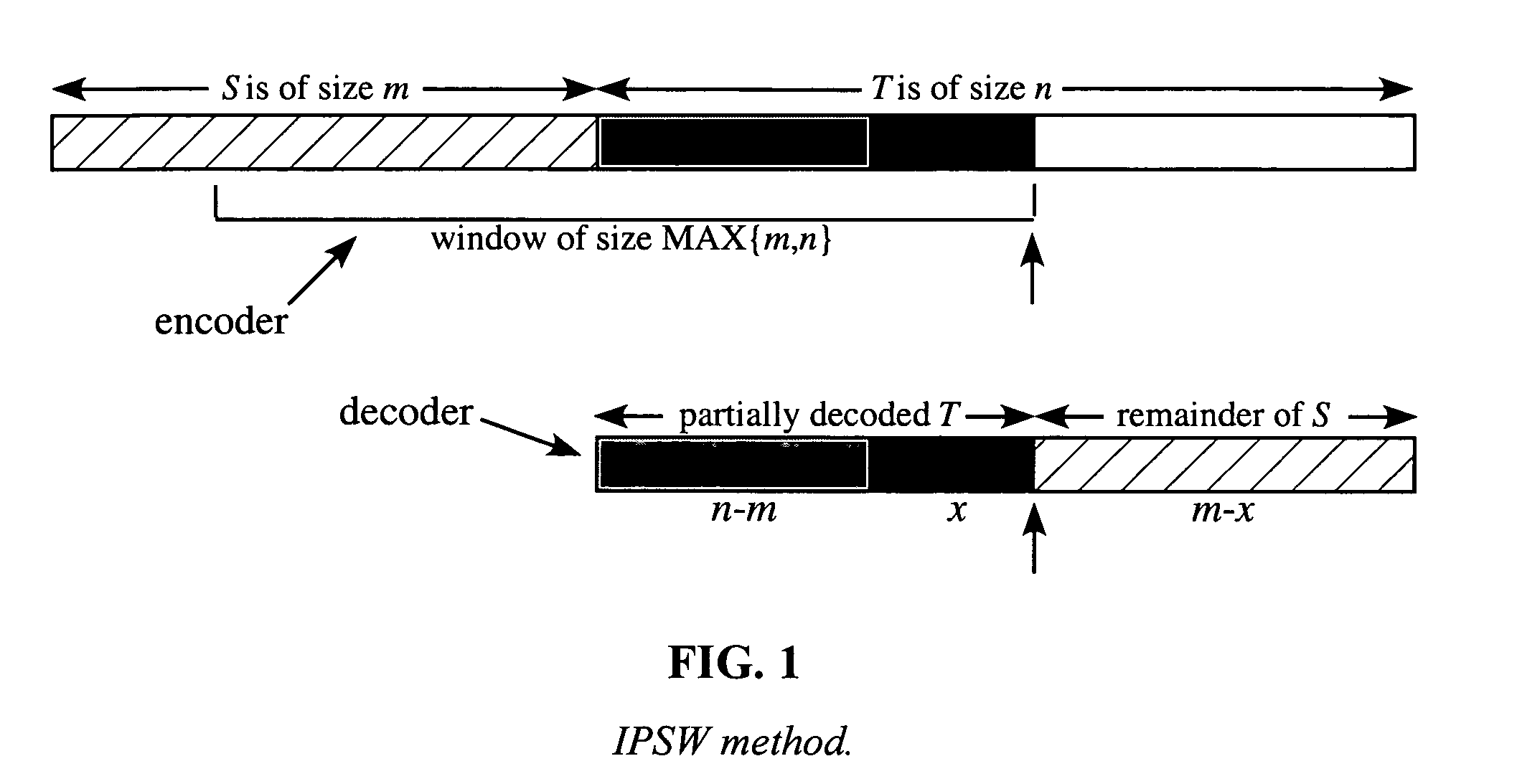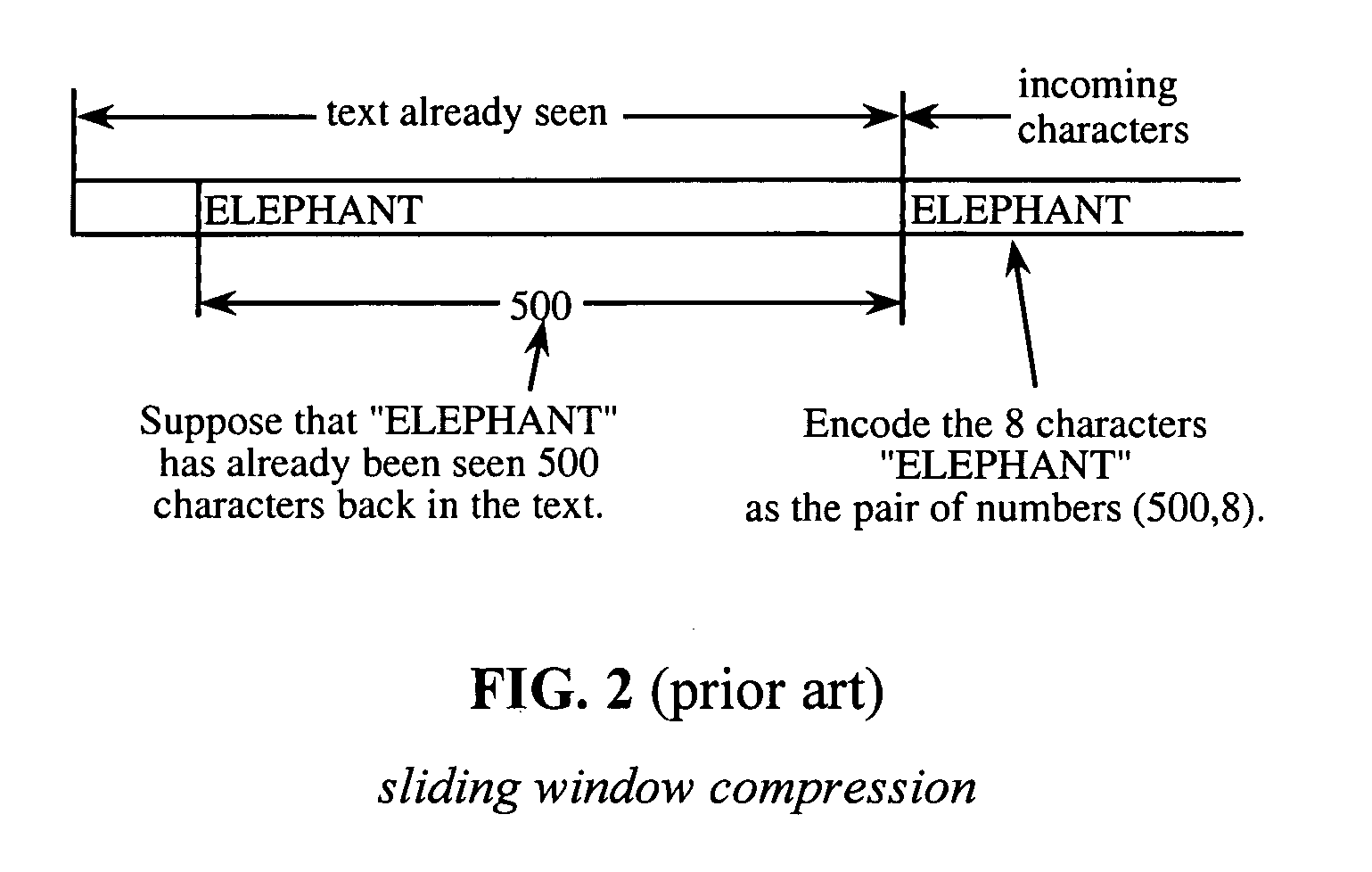In-place differential compression
a differential compression and in-place technology, applied in the field of in-place differential compression, can solve the problem of not providing in-place decoding, and achieve the effect of enhancing the effectiveness of copying substrings and better aligning s
- Summary
- Abstract
- Description
- Claims
- Application Information
AI Technical Summary
Benefits of technology
Problems solved by technology
Method used
Image
Examples
case 0
[0084] It is also possible to employ an off-the-shelf variable length coder to encode fields of a pointer. For example, to compress data where very large matches may be present, one could use the following coding method for pointers that employs an arithmetic coder: [0085] The pointer format begins with a control integer between 0 and 4 that indicates one of the following cases: [0086] No displacement or length; the bits to follow indicate a single raw character. [0087] Case 1: Displacements[0088] Case 2: Displacements between 4 KB and 36 KB that point to a match of length[0089] Case 3: Displacements larger than 36 KB that point to a match of length[0090] Case 4: Displacements larger than 36 KB that point to a match of length≧256.
[0091] Separate off-the-shelf arithmetic encoders are used to encode control integers, the raw character for Case 0, and the length fields for Cases 1 through 3.
[0092] A fixed code of either 12 or 15 bits is used for the displacements for Cases 1 and 2. ...
PUM
 Login to View More
Login to View More Abstract
Description
Claims
Application Information
 Login to View More
Login to View More - R&D
- Intellectual Property
- Life Sciences
- Materials
- Tech Scout
- Unparalleled Data Quality
- Higher Quality Content
- 60% Fewer Hallucinations
Browse by: Latest US Patents, China's latest patents, Technical Efficacy Thesaurus, Application Domain, Technology Topic, Popular Technical Reports.
© 2025 PatSnap. All rights reserved.Legal|Privacy policy|Modern Slavery Act Transparency Statement|Sitemap|About US| Contact US: help@patsnap.com



